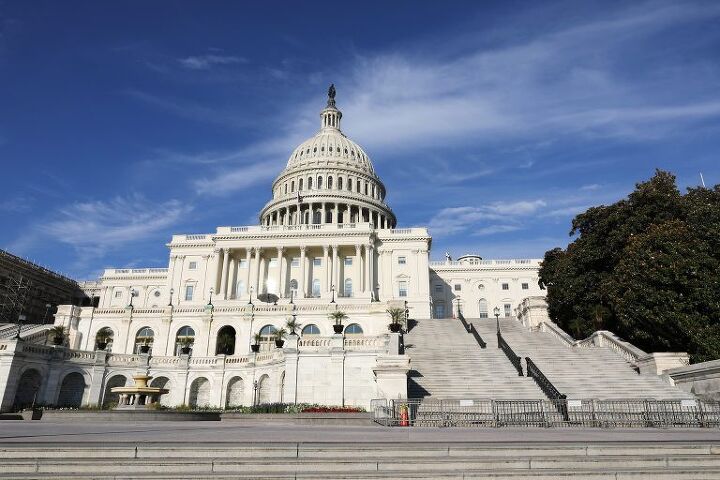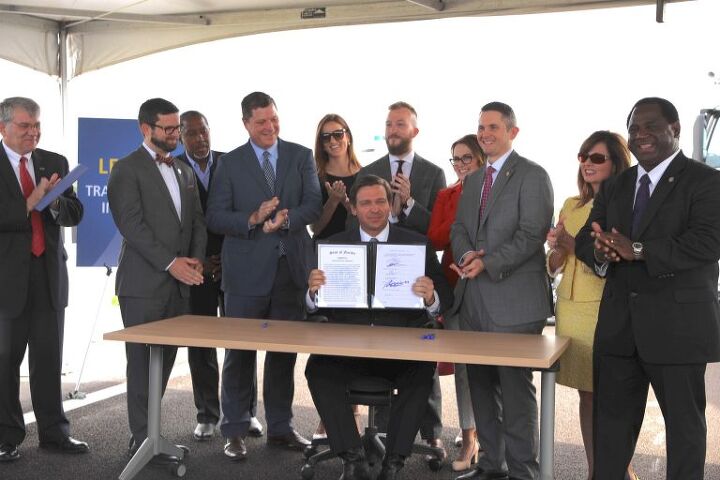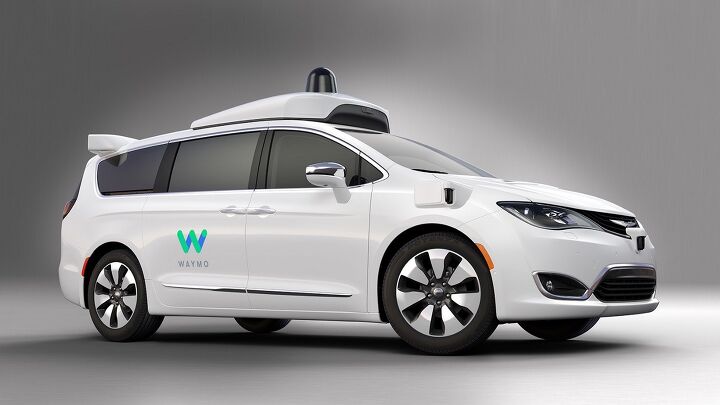#AutonomousTesting
NHTSA Readies New Voluntary Autonomous Driving Database
The National Highway Traffic Safety Administration (NHTSA) plans to release new guidance for automakers to make autonomous testing data available to the public. As you are no doubt aware, the concept of self-driving cars is losing steam. The industry finds itself confronting hurdles it never could have anticipated, slowing progress, while high-profile mishaps have shaken the public’s faith.
While polling has hardly been consistent (and often conducted by actors who frame the questions to get a desired answer), reputable outlets have shown us that public acceptance of self-driving cars declined over the past few years. The NHTSA would like to offset this by allowing regular folks to more easily track the industry’s progress, while encouraging a bit of competition among companies as they compare themselves to each other in a new database.
Hunt Ends: American Center for Mobility Names New CEO
Following a nearly six-month search for new leadership, the American Center for Mobility (ACM) has named Reuben Sarkar as its new CEO. The Michigan-based facility has been without a chief executive since Michael Noblett left in November of 2019, leaving COO Mark Chaput in charge while the company hunted for a replacement.
It found one with Sarkar. He’s positioned to assume his new role at the historic site (Willow Run) that manufactured B-24 bombers in World War II before transitioning to GM vehicles and eventually the testing of autonomous cars, in early May. But this isn’t one of those cushy CEO positions where one can sit back and enjoy a sizable annual bonus. Intellectual property conflicts, legal hazards, and a longer-than-presumed development timelines have stagnated the self-driving industry. Mr. Sarkar is going to have his work cut out for him — though we’re sure he’ll still be well paid.
Something to Agree On: Everyone Wants More Autonomous Vehicle Legislation
While the United States has enacted some laws governing autonomous vehicles, the framework is pretty loose. Automakers have a cap on the number of test vehicles they’re allowed to field. They also have to get permission from the National Highway Traffic Safety Administration, but safety reporting is basically voluntary — and there’s plenty of conflict with existing safety standards.
A House Energy and Commerce subcommittee hearing held Tuesday sought to address the issue by gathering input from an array of sources, some of which had conflicting goals. And yet it appears that a consensus has miraculously been reached on Capitol Hill. All sides want more laws passed governing autonomous vehicles, albeit for various reasons. Consumer groups want assurances that AVs will remain safe and service as many people as possible; industry groups want a clearcut regulatory framework they can use to gradually shift test mules into products with more intellectual property protection and less red tape.
Regulators, Mount Up: NTSB Presses NHTSA for Better Self-driving Safety
While the National Transportation Safety Board’s (NTSB) job isn’t to establish new regulations, it is obligated to enforce the country’s Federal Motor Vehicle Safety Standards while conducting crash investigations and making recommendations to other agencies on ways to improve vehicular safety.
Lately, that job involves telling the National Highway Traffic Safety Administration (NHTSA), an agency that does write those rules, to step up its game on autonomous vehicles.
Last week, the NTSB held a board meeting in Washington D.C. to determine the probable cause of a fatal collision between a self-driving Uber prototype and a pedestrian in March of 2018. While Uber took plenty of heat, the NHTSA also came under fire for prioritizing the advancement of advanced driving technologies over public safety.
Florida Governor Signs Bill Allowing AVs Without Human Safety Drivers
Florida Governor Ron DeSantis signed CS/HB 311: Autonomous Vehicles into law on Thursday, claiming the state has effectively removed “unnecessary obstacles that hinder the development of autonomous vehicle technology,” including human safety operators.
Provided that a vehicle meets all insurance requirements, Florida will no longer require AVs to operate with a flesh-and-blood person behind the wheel. However, those that do remain in the driver’s seat, will also be exempt from the state’s distracted driving laws.
Waymo Refocuses on Semis, Heads Back to Phoenix for Testing
Alphabet’s Waymo probably operates the most successful autonomous fleet in North America right now. While we can debate its technical prowess versus its rivals forever, it’s still one of the only companies offering a commercial taxi service using autonomous vehicles in North America. It also has an enviable safety record.
The company has also worked on adapting the technology for Class 8 trucks, testing such units previously in California, Atlanta, and Arizona. Recently, the company tweeted that self-driving semis would soon return for more testing in Phoenix — where it runs its Pacifica-based early rider program — as the company places a renewed emphasis on their development.
California Gives Ford's Argo AI Green Light to Test AVs
Argo AI, the Pittsburgh-based firm Ford pumped $1 billion into and handed responsibility for educating its self-driving vehicles, just received a go-ahead for testing in the State of California. The company gained a testing permit from the California Department of Motor Vehicles on Tuesday, making its autonomous trials perfectly legal on public roads.
Ford’s current trajectory has its autonomous vehicles entering the commercial market by 2021. That’s two years after General Motors promised to do the same. However, recent events cast doubt over whether GM will be able to meet its self-imposed deadlines (some of which dictate future investments from its partners) and start mass production of computer-controlled cars by the end of this year. It’s not just GM that’s having trouble, either. A critical look into autonomous development shows many companies are struggling with advancing the technology to a point that would make it commercially viable.
The Blue Oval might be better positioned in the autonomous race than initially presumed.
BMW Rep: Government May Never Allow for Autonomous Cars, Computerized Life and Death Decisions
BMW’s past promises include a pledge to help keep drivers driving in the brave new world of autonomous vehicles. However, it hasn’t entirely sworn off self-driving technology. The company finds itself in a tricky spot, as it’s seen as both a luxury automaker and a performance brand. But it can’t claim to be “The Ultimate Driving Machine” if it doesn’t allow customers to drive.
Automakers and tech firms pushed relentlessly for autonomous driving, making claims that a self-driving nirvana was just around the corner. But current technology proved less than perfect in practice and modern autonomous vehicles require constant human involvement to operate safely, just like any normal car. Despite making strides, the industry seems torn on how to appease everyone.
The government is even more in the dark. While lawmakers initially agreed with industry rhetoric (that autonomy will save lives and usher in a new era of mobility), recent events sparked skepticism. There aren’t many new regulations appearing in the United States, but there also isn’t any clear legislation to help decide who’s held liable when the cars malfunction. A lot of what if questions remain unanswered.
BMW thinks this will be the main reason why autonomous cars fail.
Are Government Officials Souring On Automotive Autonomy?
Thanks to the incredibly lax and voluntary guidelines outlined by the National Highway Traffic Safety Administration, automakers have had free rein to develop and test autonomous technology as they see fit. Meanwhile, the majority of states have seemed eager to welcome companies to their neck of the woods with a minimum of hassle. But things are beginning to change after a handful of high-profile accidents are forcing public officials to question whether the current approach to self-driving cars is the correct one.
The House of Representatives has already passed the SELF DRIVE Act. But it’s bipartisan companion piece, the AV START Act, has been hung up in the Senate for months now. The intent of the legislation is to remove potential barriers for autonomous development and fast track the implementation of self-driving technology. But a handful of legislators and consumer advocacy groups have claimed AV START doesn’t place a strong enough emphasis on safety and cyber security. Interesting, considering SELF DRIVE appeared to be less hard on manufacturers and passed with overwhelming support.
Of course, it also passed before the one-two punch of vehicular fatalities in California and Arizona from earlier this year. Now some policymakers are admitting they probably don’t understand the technology as they should and are becoming dubious that automakers can deliver on the multitude of promises being made. But the fact remains that some manner of legal framework needs to be established for autonomous vehicles, because it’s currently a bit of a confused free-for-all.
Arizona, Suppliers Unite Against Uber Self-driving Program
Ever since last week’s fatal accident, in which an autonomous test vehicle from Uber struck a pedestrian in Tempe, Arizona, it seems like the whole world has united against the company. While the condemnation is not undeserved, there appears to be an emphasis on casting the blame in a singular direction to ensure nobody else gets caught up in the net of outrage. But it’s important to remember that, while Uber has routinely displayed a lack of interest in pursuing safety as a priority, all autonomous tech firms are being held to the same low standards imposed by both local and federal governments.
Last week, lidar supplier Velodyne said Uber’s failure was most likely on the software end as it defended the effectiveness of its hardware. Since then, Aptiv — the supplier for the Volvo XC90’s radar and camera — claimed Uber disabled the SUV’s standard crash avoidance systems to implement its own. This was followed up by Arizona Governor Doug Ducey issuing a suspension on all autonomous testing from Uber on Monday — one week after the incident and Uber’s self-imposed suspension.
Unpacking the Autonomous Uber Fatality as Details Emerge [Updated]
Details are trickling in about the fatal incident in Tempe, Arizona, where an autonomous Uber collided with a pedestrian earlier this week. While a true assessment of the situation is ongoing, the city’s police department seems ready to absolve the company of any wrongdoing.
“The driver said it was like a flash, the person walked out in front of them,” explained Tempe police chief Sylvia Moir. “His first alert to the collision was the sound of the collision.”
This claim leaves us with more questions than answers. Research suggests autonomous driving aids lull people into complacency, dulling the senses and slowing reaction times. But most self-driving hardware, including Uber’s, uses lidar that can functionally see in pitch black conditions. Even if the driver could not see the woman crossing the street (there were streetlights), the vehicle should have picked her out clear as day.
Self-Driving Uber Vehicle Fatally Strikes Pedestrian, Company Halts Autonomous Testing
In the evening hours of March 18th, a pedestrian was fatally struck by a self-driving vehicle in Tempe, Arizona. While we all knew this was an inevitability, many expected the first casualty of progress to be later in the autonomous development timeline. The vehicle in question was owned by Uber Technologies and the company has admitted it was operating autonomously at the time of the incident.
The company has since halted all testing in the Pittsburgh, San Francisco, Toronto, and greater Phoenix areas.
If you’re wondering what happened, so is Uber. The U.S. National Transportation Safety Board (NTSB) has opened an investigation into the accident and is sending a team to Tempe. Uber says it is cooperating with authorities.
Atlanta Becomes Next American City to Host Waymo's Autonomous Test Fleet
Waymo, the self-driving unit of Google parent Alphabet, is testing the crap out of its ever-growing fleet of autonomous Chrysler Pacificas. While we know the company has already mapped dozens of North American towns, the majority of its testing takes place around Austin, Detroit, Palo Alto, San Francisco, Seattle, and especially Phoenix.
However, today the company tweeted out that it will add Atlanta, Georgia, to that list. Presently, Arizona is the only region where Waymo routinely operates vehicles without a human behind the wheel. But that’s liable to change as the firm gets more testing under its belt. Atlantans may be leaning out of car windows to snap photos of driverless vans soon enough.
Drive Me: Volvo Tweaks Script on Its Autonomous Play
Back in 2015, Volvo Cars reiterated that it would test hundreds of autonomous vehicles in the United Kingdom, Sweden, and China by 2018 as part of its Drive Me project. Using cars equipped with advanced autonomous technology, the initiative hoped to help Volvo understand how customers interact with self-driving cars.
However, the automaker appears to have tweaked that plan in a recent press release. Instead of families helping Volvo test new autonomous vehicles, they’ll help develop them by cruising around in well-equipped XC90s. While we can’t cry foul too loudly, Volvo has used highly suggestive language for the last few years. It previously claimed it would have “death-proof” cars on the road by 2020 and alluded to Drive Me using fully autonomous test vehicles — not commercially available models.
Jaguar Land Rover Enters the Autonomous Race, Test Vehicles on Public Roads
Jaguar Land Rover has taken its first steps into the scariest part of autonomous development — real world testing.
As most automakers are already deep into R&D work on self-driving cars, luxury manufacturers like JLR cannot afford to be late to the party. In today’s world, premium automobiles are less about ride quality or cabin space and more about having the latest and greatest tech. A big, comfortable car isn’t hard to come by — they used to build them all the time. They also aren’t particularly expensive, especially if you shop on the used market.
However, a 2005 Lincoln Town Car in the driveway doesn’t scream “prestige” to the neighbors. But an autonomous Range Rover that parks itself in the garage while you get the mail is something else entirely. If you had a vehicle like that, the guy across the street would have difficulty even holding your now-powerful gaze — shamed by his own car’s clear inferiority. Imagine what kind of price you might pay to have that kind of mastery over another person. Now you can see why this technology is so important to JLR.













![Unpacking the Autonomous Uber Fatality as Details Emerge [Updated]](https://cdn-fastly.thetruthaboutcars.com/media/2022/07/19/9193994/in-wake-of-crashes-public-confidence-in-self-driving-cars-pulls-a-u-turn.jpg?size=720x845&nocrop=1)















Recent Comments